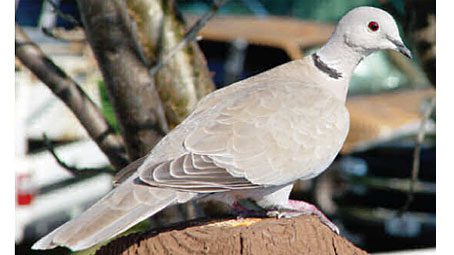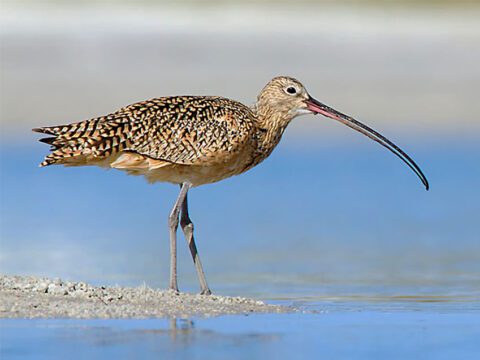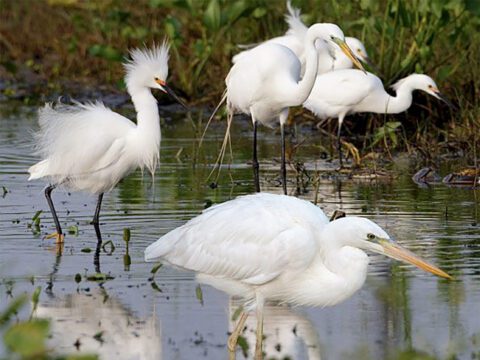Tracking the Invasion of Eurasian Collared-Doves
By Laura Erickson
April 15, 2010
Biological introductions and invasions are placed among the top five causes for declines in global biodiversity, but how introduced species affect native communities usually goes largely undocumented until long after a species has become established. One of the most recent exotic birds to arrive in North America, the Eurasian Collared-Dove was released in the Bahamas in the mid-1970s, was first documented breeding in Florida in 1982, and since about 2000 has spread rapidly across the continent. How has its presence affected other doves?
In a 2009 paper in Ecography, three scientists at the Cornell Lab of Ornithology analyzed Project FeederWatch data collected at 444 feeding stations in Florida from 1999 through 2008, examining habitat characteristics of sites preferred by collared-doves. FeederWatch project director David Bonter and Cornell Lab scientists Benjamin Zuckerberg and Janis Dickinson also examined the relationship between collared-dove abundance and the abundance of four other species of doves found in Florida.
The Eurasian Collared-Dove is associated with developed habitats throughout Europe and Asia, and this pattern holds in America. David Bonter said, “Human activity creates environments that are preferred by these nonnative doves.” Collared-doves are also known to be aggressive and behaviorally dominant over similar species, and so the research focused on how the growing population of Eurasian Collared-Doves was affecting Florida populations of Mourning Doves, Common Ground-Doves, White-winged Doves, and Rock Pigeons. David said, “So far, the new invaders do not appear to be negatively influencing the numbers of native doves that we see in the winter. But this study focuses on Florida, a sub-tropical environment. It will be interesting to see how collared-doves interact with the natives in more temperate environments.”
The range of Eurasian Collared-Doves is expanding rapidly. David said, “FeederWatchers in Alaska reported them in the past few months. The species has spread from the Southeast to Alaska in about 10 years. That truly is remarkable, and far faster than any of the estimates for the speed of invasion by House Sparrows or starlings in the 1800s.”
As they increase, will collared-doves start invading wilder areas? In Spain, where they became established in recent years, the species first colonized developed areas and then expanded into the surrounding rural landscape. Will this pattern hold true in North America? Thanks to the increasing contributions of participants in citizen-science projects, scientists will continue to track the expansion of collared-doves and the effects on other species. Their insights may suggest ways to manage the landscape to minimize problems.
Originally published in the Spring 2010 issue of BirdScope.

All About Birds
is a free resource
Available for everyone,
funded by donors like you
American Kestrel by Blair Dudeck / Macaulay Library


